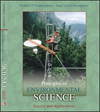 |  Principles of Environmental Science William P. Cunningham,
University of Minnesota
Mary Ann Cunningham,
Vassar College
Understanding Our Environment
Learning ObjectivesAfter studying this chapter, you should be able to:
I.define the term environment and identify some important environmental concerns that we face today. |
 |  |  | II.explain the scientific method and why it refutes or supports theories but never proves them beyond any doubt. |
 |  |  | III.apply the scientific method to problem solving. |
 |  |  | IV.explain how restoration ecology can be used to repair damaged ecosystems. |
 |  |  | V.distinguish among analytical, creative, logical, critical, and reflective thinking. |
 |  |  | VI.summarize some major environmental dilemmas and issues that shape our current environmental agenda. |
 |  |  | VII.discuss the implications of sustainability and sustainable development. |
 |  |  | VIII.recognize some of the reasons for optimism, pessimism, and pragmatism about our environmental future. |
|



 2002 McGraw-Hill Higher Education
2002 McGraw-Hill Higher Education